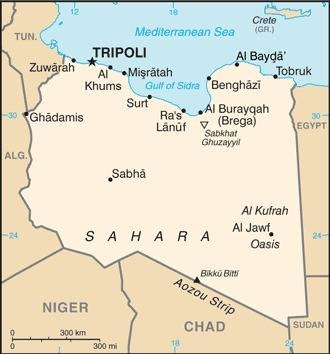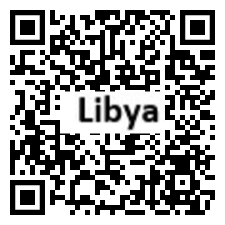Country Summary




Introduction
Background
Berbers have inhabited central north Africa since ancient times, but the region has been settled and ruled by Phoenicians, Greeks, Carthaginians, Persians, Egyptians, Greeks, Romans, and Vandals. The Italians supplanted the Ottoman Turks in the area around Tripoli in 1911, but relinquished their hold in 1943, when they were defeated in World War II. Libya then passed to UN administration and achieved independence in 1951.
Geography
Area
total: 1,759,540 sq km
land: 1,759,540 sq km
water: 0 sq km
Climate
Mediterranean along coast; dry, extreme desert interior
Natural resources
petroleum, natural gas, gypsum
People and Society
Population
7,137,931 (2022 est.)
Ethnic groups
Berber and Arab 97%, other 3% (includes Egyptian, Greek, Indian, Italian, Maltese, Pakistani, Tunisian, and Turkish)
Languages
Arabic (official), Italian, English (all widely understood in the major cities); Berber (Nafusi, Ghadamis, Suknah, Awjilah, Tamasheq)
Religions
Muslim (official; virtually all Sunni) 96.6%, Christian 2.7%, Buddhist <1%, Hindu <1%, Jewish <1%, folk religion <1%, other <1%, unafilliated <1% (2020 est.)
Population growth rate
1.65% (2022 est.)
Government
Government type
in transition
Capital
name: Tripoli (Tarabulus)
Executive branch
chief of state: Chairman, Presidential Council, Mohammed Al MENFI (since 5 February 2021)
head of government: Interim Prime Minister Abdul Hamid DUBAYBAH (since 5 February 2021)
Legislative branch
description: unicameral House of Representatives (Majlis Al Nuwab) or HoR (200 seats including 32 reserved for women; members directly elected by majority vote; member term NA); note - the High State Council serves as an advisory group for the HoR
Economy
Economic overview
upper middle-income, fossil fuel-based North African economy; 31% economic contraction due to COVID-19 and 2020 oil blockade; reduced government spending; central bank had to devalue currency; public wages are over 60% of expenditures
Real GDP (purchasing power parity)
$70.65 billion (2020 est.)
Real GDP per capita
$10,300 (2020 est.)
Agricultural products
potatoes, watermelons, tomatoes, onions, dates, milk, olives, wheat, poultry, vegetables
Industries
petroleum, petrochemicals, aluminum, iron and steel, food processing, textiles, handicrafts, cement
Exports
$29.96 billion (2018 est.)
Exports - partners
Italy 18%, China 16%, Germany 15%, Spain 15%, United Arab Emirates 6%, France 6%, United States 5% (2019)
Exports - commodities
crude petroleum, natural gas, gold, refined petroleum, scrap iron (2019)
Imports
$18.85 billion (2018 est.)
Imports - partners
China 16%, Turkey 14%, Italy 9%, United Arab Emirates 9%, Egypt 5% (2019)
Imports - commodities
refined petroleum, cars, broadcasting equipment, cigarettes, jewelry (2019)
Exchange rates
Libyan dinars (LYD) per US dollar -
Page last updated: Tuesday, July 19, 2022
